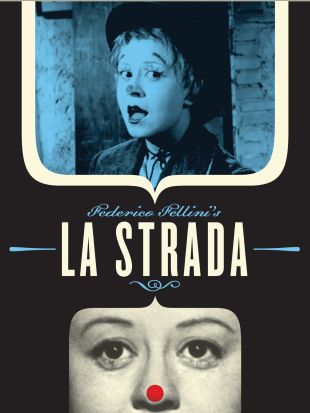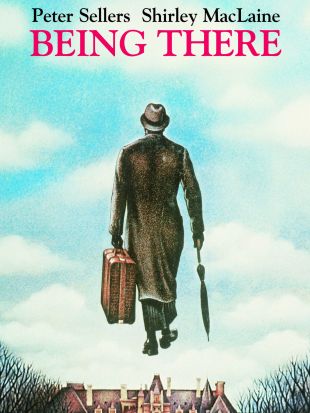Richard Basehart was too much of an actor (and almost too good an actor) to ever be a movie star -- his range was sufficient to allow him to play murderers, psychopaths, sociopaths, and would-be suicides in 20 years' worth of theatrical films in totally convincing fashion, but also to portray a hero in the longest-running science fiction/adventure series on network television. Without ever achieving stardom, he became one of the most respected performers of his generation in theater, film, and television. Born John Richard Basehart in Zanesville, OH, in 1914, he spent a part of his childhood in an orphanage after the death of his mother, when his father, Harry Basehart, found himself unable to look after the four children left in his care. The younger Basehart considered a career in journalism like his father, but when he was 13, he began acting in small roles in a local theater company and came to enjoy performing. In the mid-'30s, he joined Jasper Deeter's famed Hedgerow Theater company in Rose Valley, PA. By the end of the 1930s, he'd set his sights on a Broadway career and moved to New York. During the 1939 season, while working in stock, Basehart met an actress named Stephanie Klein, and the two were married in early 1940. He continued trying to establish a foothold in New York and in 1942, joined Margaret Webster's theater company. Basehart's breakthrough role came during 1945 in the play The Hasty Heart, in which director Bretaigne Windust cast him in the central role of the proud, dying young Scottish soldier. Basehart won the 1945 New York Drama Critics Award for his performance and was named the most promising newcomer of the season. Not only did Broadway producers take notice of Basehart but so did Hollywood, and he was soon signed to a movie contract. Thus began a screen career that lasted nearly 40 years, starting with Repeat Performance (1947), a thriller starring Joan Leslie. He followed this with Cry Wolf (1947), an adventure yarn also starring Barbara Stanwyck, Errol Flynn, and Geraldine Brooks.
Basehart was unusually careful as a new Hollywood performer to vary his roles and avoid getting typecast. His first of what proved a string of memorable portrayals was in He Walked By Night (1948), a fact-based thriller in which the actor played a brilliant but sociopathic electronics expert, responsible for a string of burglaries and for killing a police officer. Viewers who grew up knowing Basehart as the heroic figure on the series Voyage to the Bottom of the Sea in the 1960s are often startled to see him 20 years earlier in He Walked By Night as an almost feral presence, quietly fierce, threatening and stealthy in his efforts to escape detection and capture. Over the next two years, Basehart essayed a multitude of roles, in contemporary dramatic subjects and period dramas, the most interesting of which was Anthony Mann's Reign of Terror (1949), in which he portrayed Maximilien Robespierre, one of the chief architects of the bloodbath that followed in the wake of the French Revolution. In 1950, Basehart played one of the most difficult film roles of his career when he was cast in the fact-based movie Fourteen Hours, playing a young man who spends 14 hours on the ledge of an office building, threatening to jump. It was during the shooting of this movie that Basehart's wife, Stephanie, was taken ill with what proved to be a brain tumor, and died very suddenly. He finished work on the film and then left the United States, going to Italy where he began putting his life back together. This began when he met the actress Valentina Cortese, whom he married in 1951. The two worked together in one movie, The House on Telegraph Hill, directed by Robert Wise at 20th Century Fox, in which Basehart played the villain trying to murder Cortese for her estate. Basehart returned to Hollywood only intermittently for the next nine years, and his next appearance in an American movie wasn't until 1953, when he worked in Titanic, starring Barbara Stanwyck and Clifton Webb. It was during the decade that Basehart made his home in Europe that the actor became multilingual, and developed a serious following over there as a leading man; while other, older American performers were entering the final legs of their careers making pictures in France, Italy, or England, he was making important pictures and playing great roles, as the doomed, gentle clown in Federico Fellini's La Strada; a basically honest man driven into crime in The Good Die Young; the movie director threatened by a blackmailer in Joseph Losey's Finger of Guilt, and even an action-adventure hero in an Italian-made version of Cartouche (1957). John Huston specifically chose Basehart for the central role of Ishmael in his superb 1956 film version of Moby Dick. In 1957, Basehart tried reestablishing his Hollywood acting credentials with his portrayal of a conscience-stricken American officer in the movie Time Limit, which got good notices but proved to be a one-off American screen credit.
In 1960, the actor divorced his second wife and left Italy behind. He returned to live permanently in America and restart his career, and began a new life, marrying again in 1962. He found that film roles weren't easily forthcoming, however -- the only part that came his way was the title role in Stuart Heisler's 1962 drama Hitler, in which Basehart gave an unusually complex, cerebral portrayal of the Nazi leader. He made numerous appearances in dramatic series such as Combat and Naked City, and television anthology shows including Playhouse 90 and Hallmark Hall of Fame. In 1964, Basehart accepted the offer of a starring role on a television series, beginning a four-year run on the Irwin Allen-produced Voyage to the Bottom of the Sea, portraying Admiral Harriman Nelson. Thus began the steadiest work of his career, more than 100 episodes made Basehart a television star. He appeared in one movie during this period, John Sturges' thriller The Satan Bug (1965), in which he played the villain. Following the cancellation of Voyage to the Bottom of the Sea, Basehart returned to acting on-stage, interspersed with work in made-for-television movies and occasional feature films, such as Rage (1972), directed by George C. Scott. He won critical acclaim for his work in the drama The Andersonville Trial, directed by George C. Scott, portraying Lt. Col. Henry Wirz, the commandant of the notorious Confederate prisoner of war camp, and made the rounds of guest star roles in television shows, perhaps most memorably the "Dagger of the Mind" episode of Columbo. Basehart and his third wife, Diana, also became known for their dedication to the cause of animal rights, founding the organization Actors and Others for Animals. During the final years of his life, he did some acting on television series such as Knight Rider and appeared in movies such as the hit Being There, but he was also very much in demand as a narrator, working on Vietnam: The Ten Thousand Day War (1980), among other projects. It was as a narrator that he made his final public appearance, at the closing ceremonies of the 1984 Summer Olympics. Basehart suffered a series of strokes, and passed away soon after.


